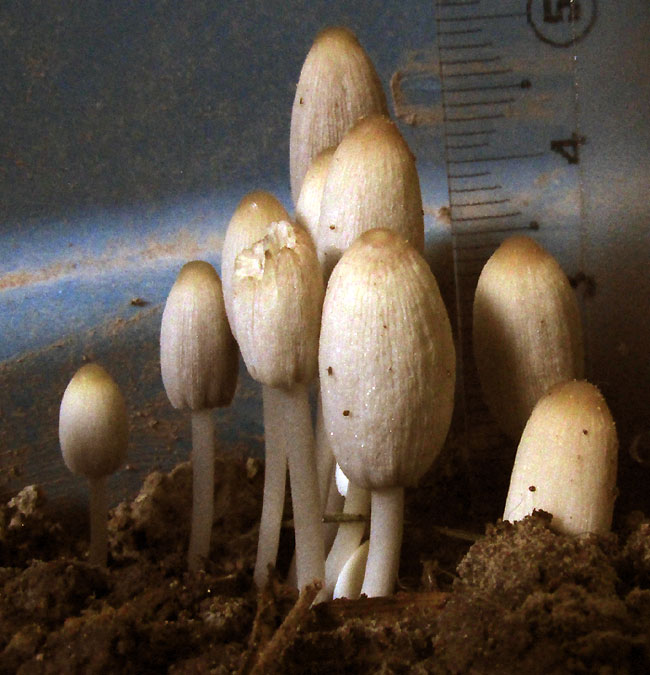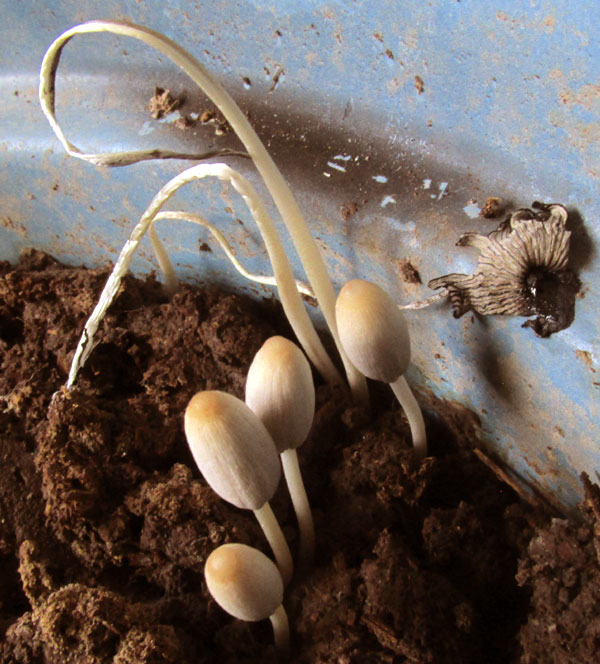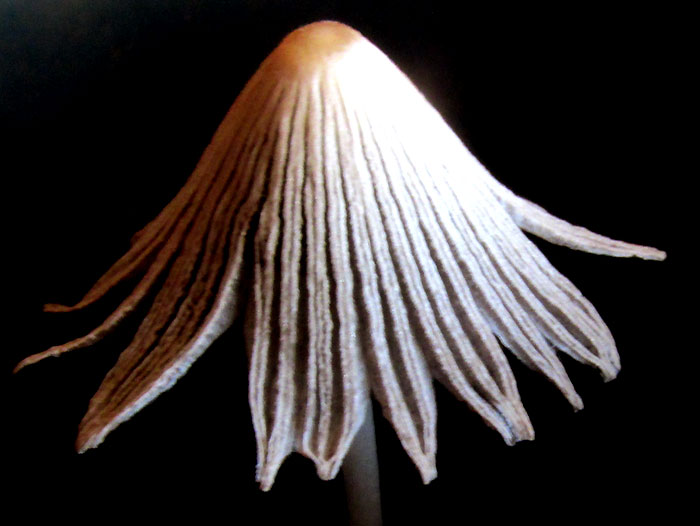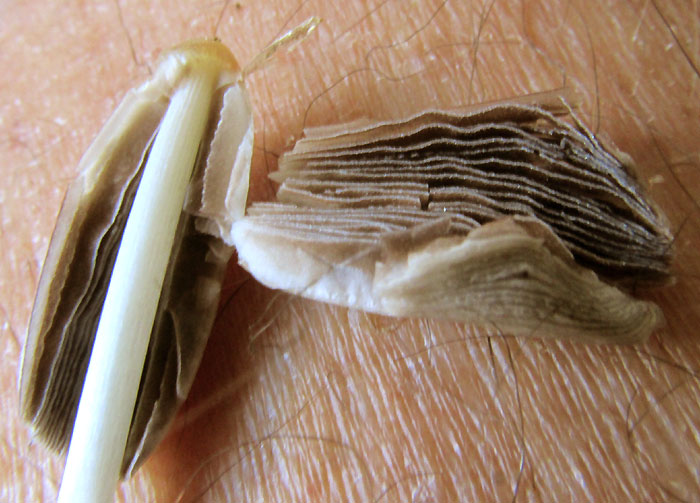Excerpts from Jim Conrad's
Naturalist Newsletter
entry dated January 12, 2022, issued from near Tequisquiapan, elevation about 1,900m (6200 ft), Querétaro state, MÉXICO
THE INKCAP PARASOLA cf. LILATINCTA

A neighbor wanted to root a stem segment from a Dieffenbachiha amoena grown too tall and lanky, so he filled a blue plastic pot with composted soil, set the pot in the basement, then let it go without sprinkling for two or so months. Then suddenly overnight the above cluster of mushrooms -- the tallest about 3cm (1.2inch) -- broke the soil's surface. What they looked like the following morning is shown below:

Besides the remarkably long, slender stem for a mushroom with such a small cap, important field marks for identification seen above include the almond-shaped immature caps with their light-brown crowns, the blackish dusting of spores collected atop the pot's inset, and the fact that after only one day a mature cap already has disintegrated. The black spores and readily disintegrating cap indicate that this is a species of the worldwide-commonly-occurring group of mushrooms known as inkcaps. The name inkcap applies to many species comprising several genera. The species often are hard to identify. In the field without a microscope and a bottle of potassium hydroxide, KOH (lye), useful for color-change tests, identifying inkcaps to species level frequently is impossible.
However, in the above picture, note that the collapsed cap isn't really melting into black ink the way many inkcaps do, the ink being largely spores. Rather, it's shriveling, leaving behind curled-up tatters. That's a big clue to the identity. Here's a mushroom just beginning to crumple:

Apparently, at first and at least in a dry basement, the fading cap's rim curls under as the stem weakens. Notice the cap's curious ribs. A mature cap better displays how the cap splits along the ribs, and the ribs themselves are narrowly lined or furrowed:

Finally, here's a peep at the very thin gills of a broken-open cap:

Having access neither to a microscope or KOH, to identify this species I had to browse hundreds of pictures on the Internet labeled as inkcaps, and the old genus Coprinus, in which all inkcaps used to reside, before it was broken up. The best match was PARASOLA LILATINCTA.
In 2017 János Gergö Szarkándi and others published "The genus Parasola: phylogeny and the description of three new species." That study refers to a complex of very closely related and similar species consisting of our Parasola lilatincta plus P. ochracea, P. schroeteri and P. misera. The authors write that their genetic studies indicated that "P. ochracea formed a species-level lineage nested within a species complex around P. lilatincta." However, morphological features indicate that P. ochracea and P. lilatincta are distinct species. A species complex is a group of very closely related organisms so similar that the boundaries between them may be unclear. Taxa within the complex may readily hybridize with one another.
The main physical difference I see between P. ochracea and our P. lilatincta is that the latter's brown zone atop the cap is less distinctly defined. The other species mentioned are more clearly different.
Mushroom spores carry long distances on winds, so it's not too surprising that the known distributions of the mentioned species are mainly European, but with reports from other continents. At this time the GBIF distribution map for our Parasola lilatincta indicates that it's nearest known occurrence to Mexico is in the US, but also scattered in places like southern Africa and northern Australia. The only location registered for Parasola ochracea is in Estonia.
Parasola lilatincta is too small and ephemeral to be considered edible, and I find no literature describing it as medicinal. Its main value is the work done by its network of hyphae, busily decomposing organic material in the pot's soil, freeing nutrients into the soil for the benefit of other organisms.